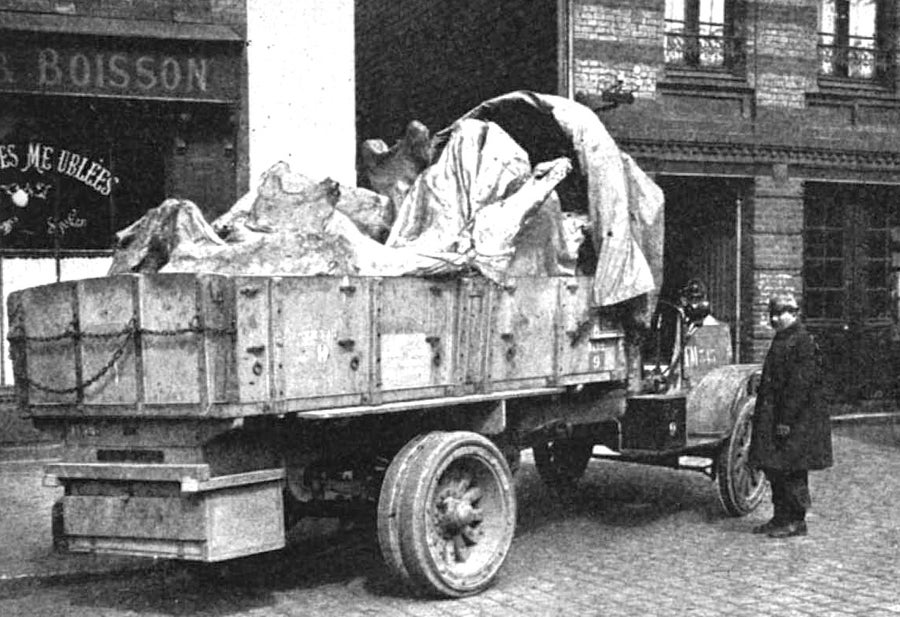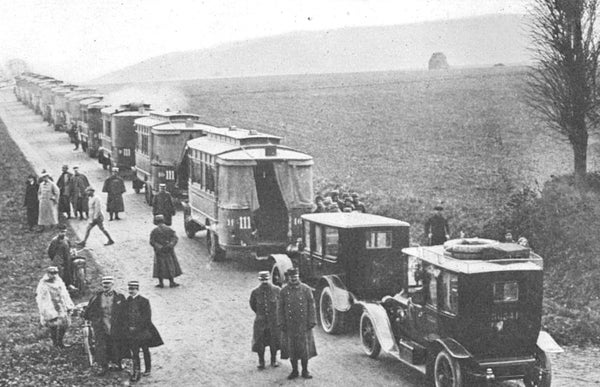This article was published in Scientific American’s former blog network and reflects the views of the author, not necessarily those of Scientific American
The German army attacked Verdun in February 1916 and for the next four months they fought a ferocious battle against the hard-pressed French defenders. The Germans sought to create heavy casualties in the French army and break through and capture the town of Verdun, which would have been highly symbolic. The French had modified their original network of obsolete forts and created defenses in depth built around a more modern system of trenches, barbed wire, and dispersed artillery.
In the new warfare, though, massive numbers of men and their continued supplies were of paramount importance. In the case of Verdun the biggest problem was that the railway links to Verdun from Paris and from the south had been severed by July 1915. In response, a light-gauge rail (the “voie ferrée de 60cm” or a rail line with a width of .6 meters) had been built. But the roads into the town were reconstructed to carry much heavier traffic. Here’s what the article from July 8, 1916, said:
“So long as Verdun was defended by a relatively small force, the bringing up of food and ammunition was a comparatively simple matter for the motor truck transport. But it became a tremendous task indeed when the Germans at the beginning of the attack massed a quarter of a million men and more than two thousand guns on this narrow front.”
On supporting science journalism
If you're enjoying this article, consider supporting our award-winning journalism by subscribing. By purchasing a subscription you are helping to ensure the future of impactful stories about the discoveries and ideas shaping our world today.

An “American-made truck” loaded with beef just preparatory to being weighed before starting for Verdun. Credit: Scientific American, July 8, 1916
“It was here, then, that the motor transport performed its miracle of bringing up a quarter of a million men, supplying this great force with food and ammunition and removing the wounded. It was the first time in the history of the world war that any army of this great magnitude was dependent entirely upon motor transport. It must be remembered in this connection that the amount of ammunition expended by the French in the defense of Verdun is greater than that used in any other battle in the world's history, not even excepting last year's French offensive in the Champagne. It is indeed a miracle that motor transport was able to supply every single shell, in addition to bringing up a fresh army of perhaps more than a quarter of a million men, its rations, supplies and innumerable guns both heavy and light.”
“The first problem of General Herr, in command of the forces at Verdun when the attack began, was that of roadways. He foresaw many months in advance the great handicaps the motor transport would be under in case of an attack on the fortress, and at once begun the entire reconstruction of the one main highway running south from Verdun through Bar-Ie-Duc and St. Dizier. This road, at first, like the other average roads of France, fairly narrow, though with a good foundation, would not have been sufficient to prevent congestion and delays, costly if not fatal, when several thousand motor trucks had to run over it in both directions at the same time.

The last stage of the chain of supply close to the front lines where valuable motor transport could not be risked: small horse-drawn carts carry machine-gun ammunition to the trenches of Verdun. Credit: Scientific American, July 8, 1916
Accordingly, this road was entirely rebuilt. Army engineers laid down a new foundation, doubled its width in some places and tripled it in others. Turnouts were provided at certain specified intervals, on which trucks not working properly could be sidetracked and their troubles remedied. In every village along the route there were repair shops complete in every detail, filled with every conceivable part that might be needed to enable a damaged or broken·down truck to be repaired.”
The irony of this article being published on July 8, 1916, is that the massively costly British-French offensive on the Somme had been under way for a week; the Germans were very quickly obliged to draw troops away from their assault on Verdun in order to shore up their defenses to the north. The pressure on Verdun and the French forces defending it lessened markedly from this time onward.
-
Our full archive of the war, called Scientific American Chronicles: World War I, has many articles from 1914–1918 on trench warfare in the First World War. It is available for purchase at www.scientificamerican.com/products/world-war-i/
